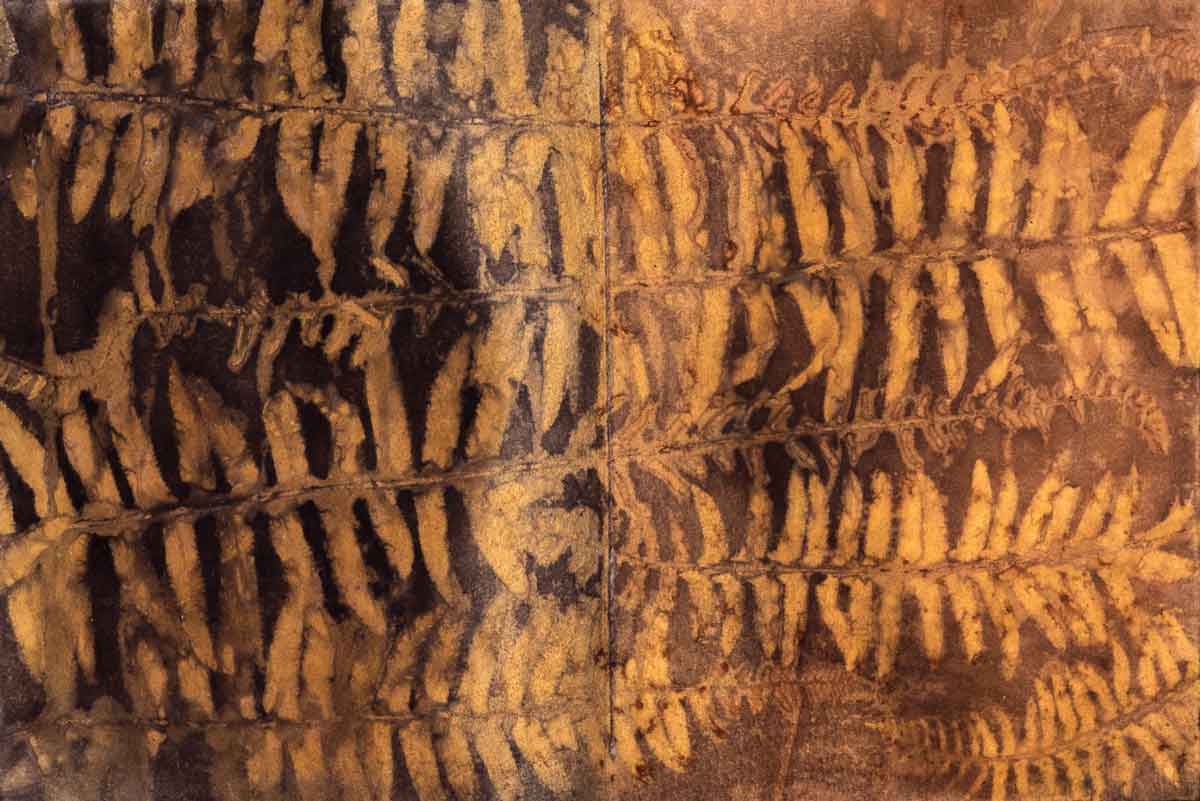This post kicks off what I hope to be a regular feature on my blog. Please give a big welcome to Jarrod Cluck, the first subject of my Nature-Influenced Artist Interviews.
Jarrod is a native of small-town Rudy, Arkansas. He dwells amongst the Ozarks where he works, lives, and draws inspiration. Jarrod stewards chickens and gardens with care. In his work, he uses film and eco-prints to document an ongoing feedback loop of observation and response. An ethic of land is developed.
Jarrod graduated from the University of Arkansas Fort Smith in 2015 with a BA and the University of Hartford’s Nomad MFA program with an MFA in 2021. He has shown work and performed in Rudy AR, Fort Smith AR, Hartford CT, Miami FL, New York City NY, San Francisco CA, and Oaxaca de Juárez. Currently, Jarrod serves on the board of directors at Ozark Folkways and teaches Drawing at the University of Arkansas Fort Smith.
Jarrod Cluck Answers The Questions
Is nature your main focus in your art, or do you paint other subjects or styles?
Yes.
And yes.
I often return to nature, yet have a hard time getting away from it. I’m part of it, though I find myself feeling disconnected. This is one reason I am drawn to natural materials. These materials connect me back to this time and place. This action is my focus. I’m not a painter. I’m a seeker.
I’m personally a big fan of natural pigments. When did you start using them in your work?
When I was a kid I got in trouble for smearing lightning bugs all over my face. Then I got in trouble again for staining my hands and clothes with pokeweed. I wanted to know where things come from and how they work- still do. Later on in my studio practice, I found myself working with oil paints, turpentine, and every other material I could find at the hardware store. Eventually I began to suffer the symptoms of exposure. As you loose the layer of natural oil on your hands, all the cadmiums make their way into your system. I started to taste metal. It was too much. It cost too much. Have you ever seen a cadmium mine? Me neither.
Are you a purist in any fashion, or do you use a variety of mediums/brands/colors?
For the reasons above, I am trying to source all of my materials from the area. This palette is local. It is specific to this place and season.
Do you have a studio routine?
Oh, yeah. I like to drink my coffee before I drink my coffee. This is important. My studio practice is seasonal. As I rely on natural materials, winter is dormant. This time I spend drawing and planning in preparation for the coming spring. In the spring, seeds are sewn for dye plants, fiber, medicine, and food for the table. I’m not the farmer my ancestors were, but try to honor the tradition and keep the knowledge. Summer is full production. By the time autumn rolls around and the gardens have been harvested, materials need to be sorted, processed, and stored. This is also a good time to forage. Walking is a lot better after the heat breaks. Before you know it, the cycle starts again. A time to gather. A time to mend. A time to plant.
Do you think there is a benefit to art that depicts nature? Is there a message you’d like to get across?
I see benefits in the process. For me, the value of working with materials from my environment is that it forces me to connect with that environment. I am part of it. In this way, I can better see the effect of my actions. If I take too much, there won’t be any next year. These resources have value more than the price tag we put on them. The same can be said for the value of craft. Working with these materials brings me closer to nature, and the materials closer to humanity.
So I say this: Slow down. Look. See. Be here.
Are there any exhibits planned for 2021-2022, or shows/fairs, etc?
Not yet. Let’s have one.
Actually, that’s a great idea. I haven’t seen any exhibits dedicated to nature artists out here. ~ Madison
Has Covid impacted your life as an artist?
I was trying to finish my MFA thesis when Covid hit. It changed everything. Our show was cancelled. Then it was cancelled again as was graduation. How are we to come together when we cannot stand close? These are trying times, times when we need art. So, our cohort adapted. We quarantined, travelled in cloaks, went virtual and opened live to a very limited number of people. It’s not how we imagined it. We are the class of Covid.
How would you describe your ‘artist’s voice’?
Crowing at first light, howling at the moon, poiesis.
Do you have a studio where interested collectors can find you? If not, do you have an online gallery or website?
If you want to find me, you can find me. I’m on YouTube and IG. I’m interested in starting a conversation. Are you offering gallery representation?
Selected Works


About These Interviews
Thanks for reading! Please get in touch with Jarrod through Instagram or YouTube if you’d like to ask him questions or start networking with him. Your comments here are appreciated by me, but the interviewed artist might not see them if it’s a question directed to them. If you’re an artist of Arkansas who is heavily influenced by nature and you’d like to be featured here, please email me.
More Arkansas Nature Artist Interviews
Whenever I get some more interviews submitted, I will add links to them here. Check back and spread the word by sharing this post on FB and your other social media. Thank you!


Leave a Reply